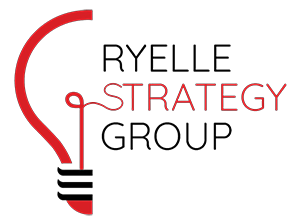We are navigating an era marked by profound transformation. The ramifications of climate change, rising living costs, and global conflicts touch every facet of our lives, reshaping markets, supply chains, and organizational directions while impacting the lives of employees. In the past few years, the pace of change has not only intensified but shows no signs of slowing down. Organizations that previously struggled to drive change are now asking themselves, ‘How will we build a platform for continual adaptation?’
Change is universally difficult, and for many organizations, transformation is essential. Whether the transformation pertains to technology, performance, or diversity, equity, inclusion, and accessibility, deep culture change is imperative to survive. At the same time, organizations face a variety of barriers, from entrenched cultures and rigid structures to varying degrees of leadership commitment. However, one of the most significant and often overlooked obstacles is the human element. Unlike project management, which is structured and predictable, change management is predominantly about people — unpredictable, complex, and often resistant.
“If you want to make enemies, try to change something.”
– Woodrow Wilson
True transformation necessitates both behavioural and attitudinal shifts. If individuals are unwilling, the path can be laden with mines and punitive measures may only deplete your workforce. The true challenge lies in winning the hearts and minds of the people you wish to influence. As with everything that pertains to the human condition, that begins with empathy.
“Nothing so undermines organizational change as the failure to think through the losses people face.”
– William Bridges
As we walk through the strategy planning process leveraging all the change management tools available, we can also look to Maslow’s hierarchy of needs to understand and potentially anticipate resistance. For instance, we can start by asking ourselves, ‘Will this change affect someone’s job security, their ability to provide for their families or their social connections at work? Will it foster fears of demotion or hinder personal career aspirations?’ Often, the answer might be ‘yes’ to a few of these questions; so, how will you create buy-in?
- Be real: Addressing these concerns head-on is crucial. Leaders must articulate the ‘why’ behind the change. Why is it necessary? What risks do we face by remaining static? What opportunities might we miss if we resist change? What benefits does the change hold for everyone involved? Clear answers to these questions help clarify the personal stakes for each employee.
- Share the vision: It is essential to paint a compelling vision of the future. Leaders are not just implementing a change; they are selling a vision and capturing people’s hearts and minds in a way that makes them eager to join in shaping this new future. This vision should be informed by the rationale behind the change and detail what success looks like. How will it improve the lives of employees, customers, and the community?
- Engage, consult, and empower: Effective change management involves more than just announcements via email or at town hall meetings. It requires active engagement with employees, inviting them to co-create the vision and participate in the transformation. This approach not only reinforces buy-in but integrates the change into the organization’s culture through continuous dialogue and feedback. Questions such as, “How do we define inclusivity here?” or “What do I need to successfully implement this change?” are vital in keeping the conversation relevant and focused on personal and organizational growth.
- Dig in: Change is a long game. Many transformation agendas falter due to fading momentum and lack of widespread adoption. Ongoing measurement, course correction, and consistent engagement are essential. As Winston Churchill famously encouraged, “Never give in.” This mantra should inspire persistence and resilience in the face of the challenges posed by organizational change.
In summary, the key to effective change management lies not just in strategic planning or project execution but in genuinely engaging with and winning the hearts and minds of those involved. It is about understanding the human aspect of change and addressing it with empathy, clarity, and vision.
“Never give in.”
– Winston Churchill




